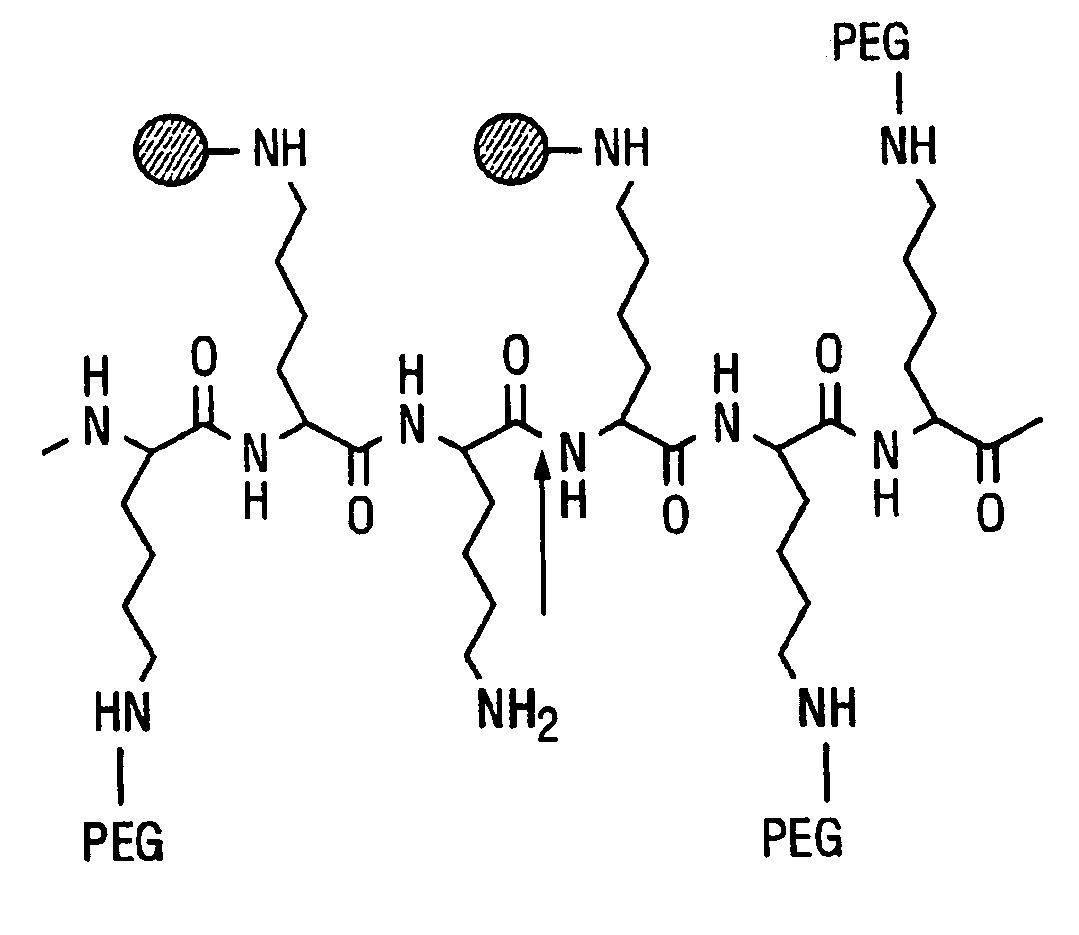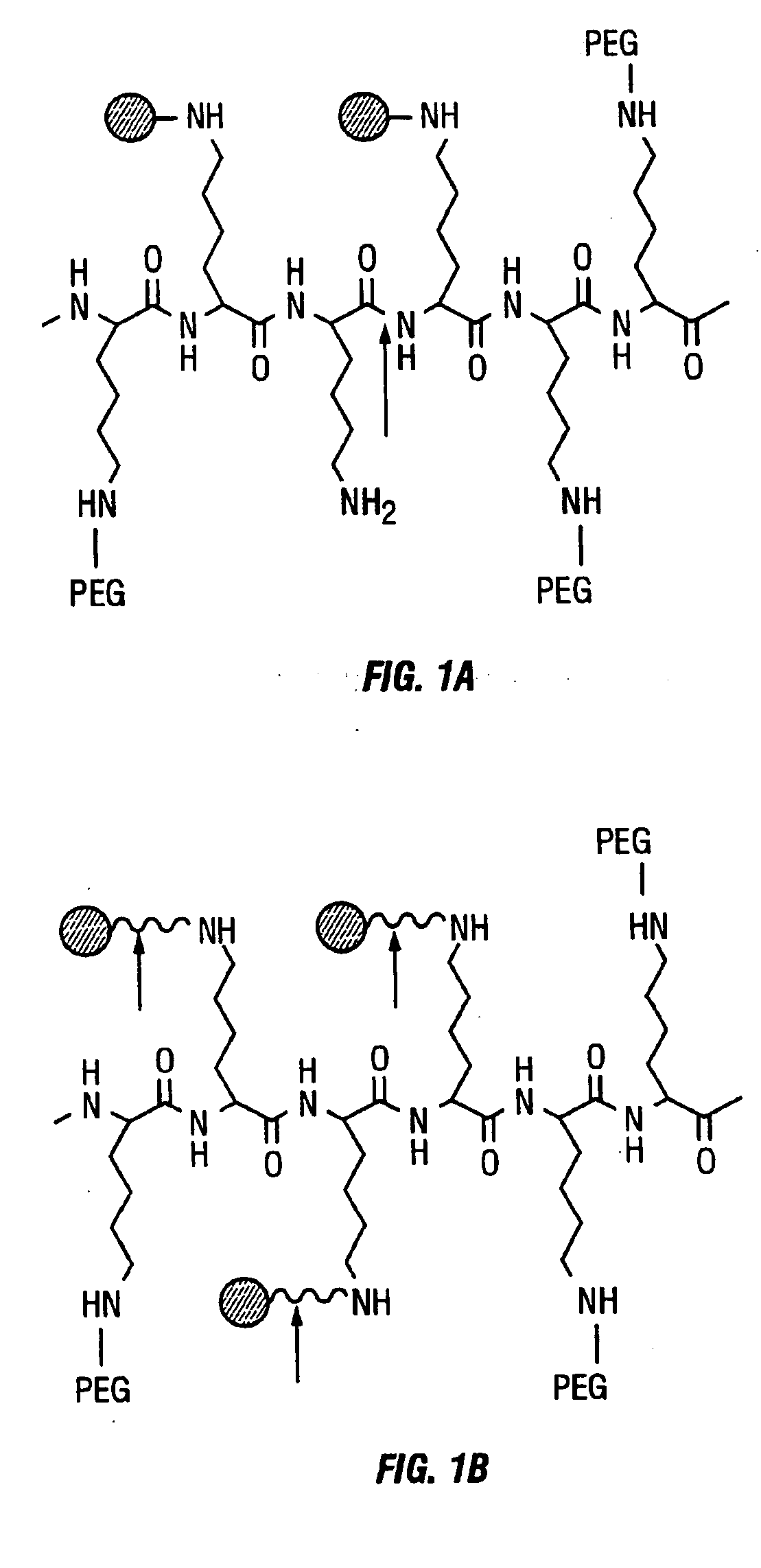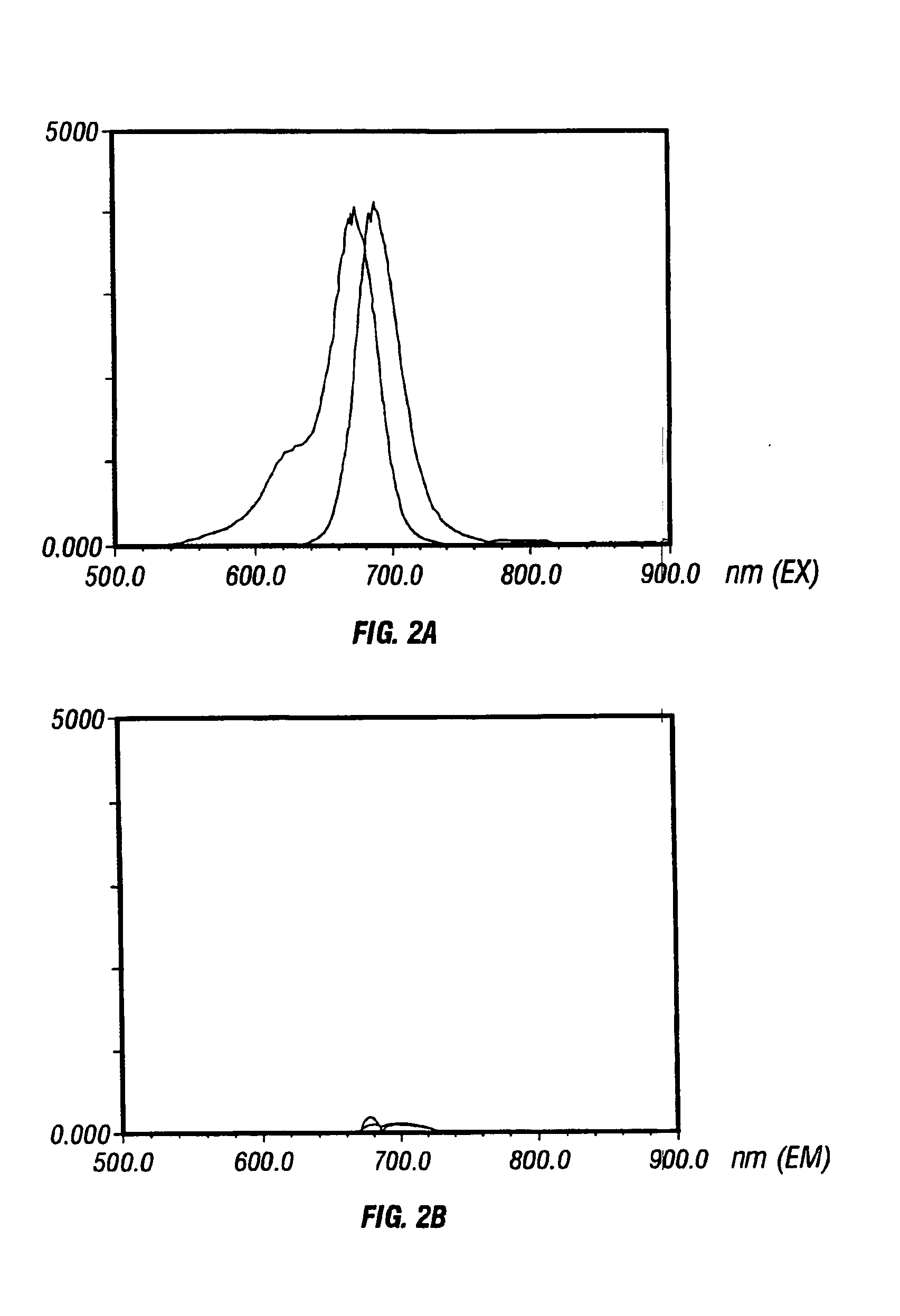Activatable imaging probes
a technology of active imaging and probes, applied in the field of biological and cell biology, can solve the problems of low target/background ratio, many limitations of conventional near infrared fluorescence probes, etc., and achieve the effect of altering the optical properties of chromophores
- Summary
- Abstract
- Description
- Claims
- Application Information
AI Technical Summary
Benefits of technology
Problems solved by technology
Method used
Image
Examples
example 1
[0144] To demonstrate the ability of the probes to image tumors, we tested the near intramolecularly-quenched infrared imaging probe (Cy11-PL-MPEG; 20% fluorochrome loading) in tumor-bearing mice. Nude mice bearing tumor line 9L or LX1 received 2 nmol of Cy11-PL-MPEG intravenously. The mice were imaged by near infrared light immediately and up to 36 hours after intravenous administration of the probe. The tumor was visible as an area of intense fluorescence, in contrast to the surrounding tissue. An increase in fluorescence signal within tumor was observed as a function of time, as the probe was internalized into tumor cells and became activated by endosomal hydrolases.
[0145] Using cathepsin D (2000, Cancer Res. 60: 4953-4958) as a model target protease, we synthesized a long circulating, synthetic graft copolymer bearing near infrared (NIR) fluorochrome positioned on cleavable substrate sequences. In its native state, the reporter probe was essentially non-fluorescent at 700 nm du...
example 2
[0147] To demonstrate the ability of fluorescent probes to image colonic polyps, malignant and benign Apc-Min (C57BL / 6J-ApcMin) mice, a strain highly susceptible to spontaneous intestinal adenoma formation, were evaluated after the intravenous injection of 2 nmol per mouse of cathepsin B sensitive probe. Twenty-four hours after probe injection, animals were sacrificed and colons resected. White light and fluorescent images demonstrated the marked difference in fluorescent signal intensity in the polyps as compared to adjacent normal epithelium.
[0148] The resulting marked increase in contrast between normal and abnormal tissue may be exploited during colonoscopy (or endoscopy) to aid in lesion detection.
example 3
[0149] To demonstrate the ability of the probes of the current invention to image ovarian cancer, very small peritoneal tumor deposits using CaD− and CaD+ cell lines (transfected 3Y1 rat embryonic tumor cell line) were implanted into mice intraperitoneally. The Cathepsin D probe described in more detail previously was then administered IV and the peritoneal surfaces were imaged 24 hours later using white light (i.e. as in conventional endoscopy) or at 700 nm (NIRF imaging). Microscopic deposits of 300 μm could be readily detected by NIRF imaging that were not visible by white light imaging.
[0150] The resulting marked increase in detection of minimal residual disease in ovarian cancer may be exploited during laproscopy (or endoscopy) to aid in lesion detection and to monitor therapy.
PUM
| Property | Measurement | Unit |
|---|---|---|
| Therapeutic | aaaaa | aaaaa |
| Nucleic acid sequence | aaaaa | aaaaa |
| Fluorescence | aaaaa | aaaaa |
Abstract
Description
Claims
Application Information
 Login to View More
Login to View More - R&D
- Intellectual Property
- Life Sciences
- Materials
- Tech Scout
- Unparalleled Data Quality
- Higher Quality Content
- 60% Fewer Hallucinations
Browse by: Latest US Patents, China's latest patents, Technical Efficacy Thesaurus, Application Domain, Technology Topic, Popular Technical Reports.
© 2025 PatSnap. All rights reserved.Legal|Privacy policy|Modern Slavery Act Transparency Statement|Sitemap|About US| Contact US: help@patsnap.com



